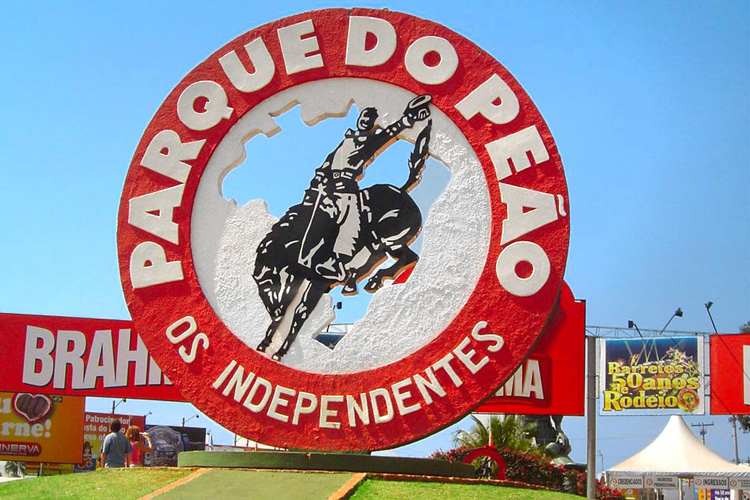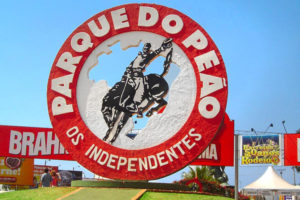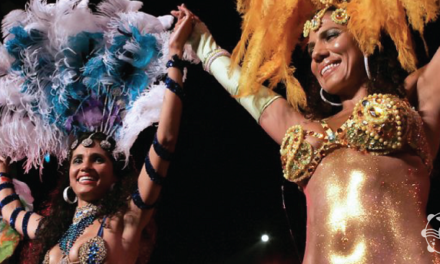By Laís Oliveira
Translation: Isabela Jordão
The history of Barretos, hinterland of São Paulo, is mixed with the Brazilian rodeo. Until 1955, the place was still a quiet city that had livestock as its main economic activity. Mandatory passage of the “cowboy corridors”, as the cattle transport routes between one state and another were known, the city would, a few decades later, become the stage for the largest rodeo party in Latin America.
In a small city with no leisure and local attractions, the delegates of the entourages, when they got together to rest between trips, ended up creating a thousand ways to have fun and spend time. And as it could not be otherwise, in these meetings they tried to show their skills in dealing with cattle and riding animals.
In 1947, at the fair held by the City Hall of Barretos, at the central square of the city, there was the first rodeo in Brazil, held inside a fence with bleachers. But the need to expand the party and turn it into a national attraction made some young locals dream big.
And that was how, in 1955, at a bar table, a group of boys called “The Independents”, linked to local agriculture, had the idea of promoting parties inspired by the culture of the countryside and farms, with the aim of raising funds for assistance organizations in the region.
A year later, in 1956, the Festa do Peão de Boiadeiro de Barretos was launched, under the canvas of an old circus. From this year, always in the month of August, the parties became part of the official calendar of festivities in the city, and mobilized adhesions in neighboring municipalities.
What no one could imagine was that, from that year on, the history of cowboy pedestrians would change forever, and that Barretos’ destiny would be to become the capital of the Brazilian rodeo, concentrating the largest event in the area in Latin America. Everything that was done there served as a model for other cities that were also beginning to promote their parties.
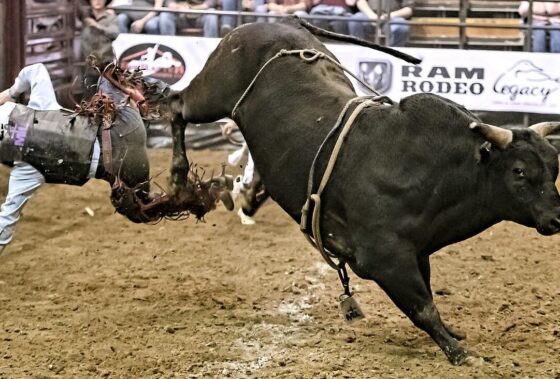 And the success of the event went further. In the Netflix documentary series “Fearless”, Barretos is defined as the “Mecca of rodeos”. And there is no denying that the “Festa do Peão de Boiadeiro” has become a landmark in the Country World and has changed the references of every Brazilian who did not know the culture and traditions of the countryside.
And the success of the event went further. In the Netflix documentary series “Fearless”, Barretos is defined as the “Mecca of rodeos”. And there is no denying that the “Festa do Peão de Boiadeiro” has become a landmark in the Country World and has changed the references of every Brazilian who did not know the culture and traditions of the countryside.
Since its first edition, in 1956, the venue of the event has been changing and expanding its structure. The park has been renovated and currently has parking for 15 thousand vehicles, has gained new gardens, a camping area for families and yet another set of masonry boxes. The area also has an amusement park, museum, zoo, police station, nursing station, dental clinic, grocery store and even a pharmacy.
The Barretos Cowboy Festival
In Brazil, the rodeo is a syncretism of the sport imported from the USA in the 1950s. This latest version of the rodeo that now lives with the “vaquejada” — a traditional game practiced since the 16th century throughout the country — consists of riding bulls and horses not tamed, with the rider remaining at least eight seconds on the mount holding only one hand, and leaning on a rope attached to the animal.
However, the rodeo took on a festive stance, associating itself with artistic disputes, soccer games, parades, dances, music and typical foods, according to the culture of Barretos, considered, nowadays, the capital of national livestock, due to the great numbers it moves annually, in August, when the “Festa do Peão” takes place.
The numbers are huge. Annually, around one million people are expected from all over Brazil and other countries during the 11 days of the festival, which has more than 100 shows and mounts. The park has 2 million m² and 60 tons of sound equipment that surpass giant events like Rock in Rio and Lollapalooza.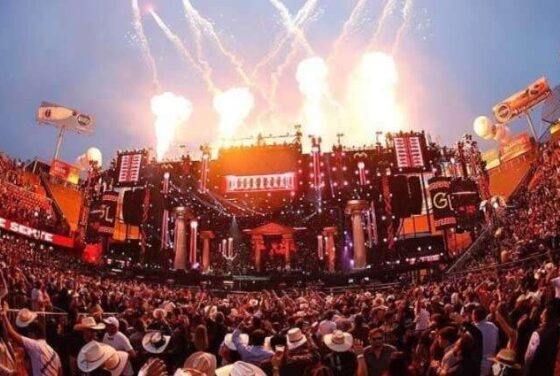
As one of the party’s trademarks is rodeo, the numbers would also be striking. Altogether, 600 pedestrians from all over Brazil and even from other countries compete for bull and horse mounts, as well as competitions such as team penning and three drums — the only one in which women participate.
Children are also welcome in Barretos. “Rancho do Peãozinho”, built in an area of 35,000 square meters, was specially developed for the little ones. Full of green, the space has a daily program that includes dance, music and theater presentations, mini farm, gaudy contest, science arena, among other activities.
The event also moves commerce and services, in addition to the hotel and real estate sectors of the regions of São José do Rio Preto (SP) and Ribeirão Preto (SP), 100 kilometers away. This is because the occupancy rate in the city’s hotels reaches 100%, 15 days before the event.
The rodeo was no longer just part of popular leisure, which carried the stigma of “hillbilly activity” and also became a notable, autonomous and consecrating urban event for the cowboy pedestrian and tamers, becoming an event full of attractions, with spectacular bids and millionaires. And the “Festa do Peão de Boiadeiros” is living proof that tradition has not died out.
*Planning a trip to Brazil? For airline tickets from the United States to Brazil or Latin America, custom travel packages, hotels and alternative stays, as well as Cruises from the United States, contact our travel agent and tour organizer, Magali DaSilva. Phone/WhatsApp 1(323) 428-1963 – email: magali_at_soubrasil.com

